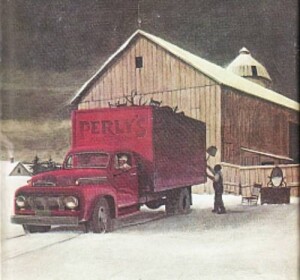 Joan Samson’s lone novel The Auctioneer was on publication a bestseller and beloved. Sadly, in part due to Samson’s passing just after publication, the novel spent decades as a forgotten curiosity. Several years ago a new limited edition was released, and more recently it was added to the line Grady Hendrix curates based upon his history of paperback horror novels. These led to this new edition by Suntup Editions, known for releasing premier volumes.
Joan Samson’s lone novel The Auctioneer was on publication a bestseller and beloved. Sadly, in part due to Samson’s passing just after publication, the novel spent decades as a forgotten curiosity. Several years ago a new limited edition was released, and more recently it was added to the line Grady Hendrix curates based upon his history of paperback horror novels. These led to this new edition by Suntup Editions, known for releasing premier volumes.
There are two introductory pieces in this book. One is from Grady Hendrix, an artifact of the printing he helped bring about. The other is more recent and heartbreaking, coming from Joan Samson’s widowed husband. As he describes her final days the reader cannot help but empathise, wondering what might have been on a level far more than literary. At the same time it is noted that there is an interesting parallel between the kind of evil that spreads through the town and the cancer that devastated Joan Samson in her final months. It is a most effective piece of storytelling.
The story starts with John talking to the local police, discussing the myriad ways in which their little township seems to have changed. Even so, there comes the news of a new arrival named Perly who is by trade an auctioneer. There is a suggestion that, in light of recent events up to and including a murder, it might do well for there to be a deputy. Also this Perly fellow has an idea to run an auction. John Moore and his family give up a few old wagon wheels. This seems well and good, until another week goes by only for the police, and Perly, to want more. This is treated as annoying, yet not out of control. When Perly himself appears he is a large but overall charming man, and the question of how this will turn bad is a slow process, but all the more disturbing for it.
When The Auctioneer was released, comparison was made to Shirley Jackson’s The Lottery, and it is easy to see why. There is a horrific and disturbing nature to the events in the book, a building dread and atmosphere. Yet there is little to nothing that can be seen as supernatural in the book, and the human nature of the evil workes to make it particularly provocative.
The time in the 1970’s this volume was set will likely never see its like again. The Moore family do not have a bathroom, bathing in local bodies of water, and as a result one might find it hard to see that combined with regular television viewing on the part of a live-in older relative. Indeed, the destruction of the TV itself is a startling and provocative moment, the object treated as irriplacable. In the days of $90 Chinese made flatscreens this to might jar for someone not familiar with the setting. At the same time, Samson does a wonderful job of drawing the reader in and making how the little community works very clear very quickly. Simple gestures, an old woman discussing generations past, a dislike for the local law enforcement without hatred, all lean towards a small town adjusting to time as it always has, before something sparks the horrific.
Dave Christensen’s illustrations are extremely effective. A series of black and white images which serve to provide picture for what is supposed to have started as a somewhat picturesque setting and the most disturbing ways in which small and steadily more disturbing events pile up. Indeed the use of simple black and white for events that are rather splashy like a fire serves to give a disturbingly sombre air to the whole of the telling.
Joan Samson‘s The Auctioneer is the brilliant product of Joan Samson’s mind, a career and life cut terribly short. It is a story that depicts how the fear of change can lead to the worst kind. About a small community filled with fear of outsiders managing to destroy themselves and fail to notice the risks they truly face. It it’s an easy novel to recommend both to the horror and literary crowd, and the new Suntup edition promises to be gorgeous.
(Suntup 2020)
